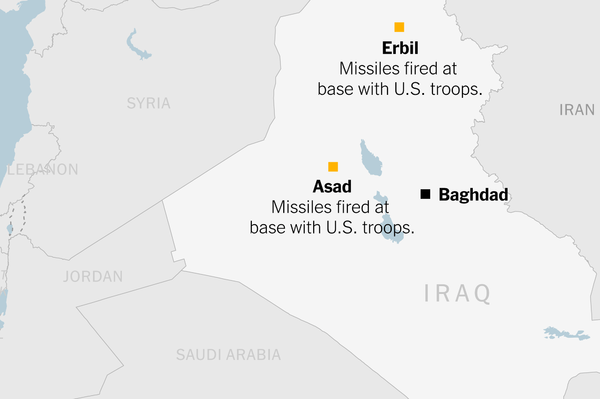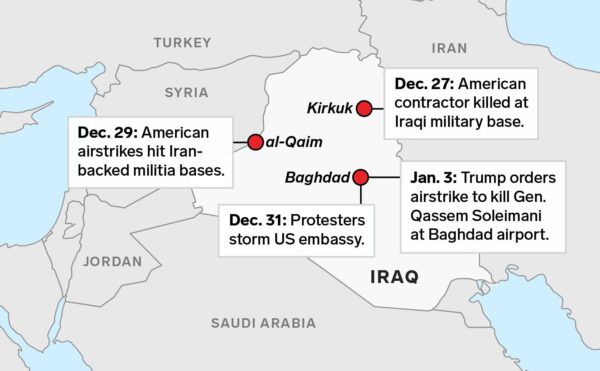The tensions between the United States and Iran began years ago. However, the most recent crisis between the two countries was fueled when US Airforce F-15s bombed “pro-Iranian” militia bases in Iraq and Syria on Dec. 29, 2019.
In response, unhappy protesters broke into the United States Embassy located in Baghdad on Dec. 31, 2019, and lit fires to express their outrage over the American airstrikes that killed 24 members of the Iranian-backed militia.
President Trump was presented with several options to respond to the protest, but blaming Iran’s government for the protest, he ordered the assassination of Iran’s most powerful general, Qassem Soleimani, according to Pentagon officials.
On Jan. 3, 2020, an American MQ-9 Reaper drone fired missiles into the vehicle that was transporting General Quassem Soleimani. General Soleimani was one of Iran’s most important military figures as he was the commander of Iran’s Revolutionary Guards Corps. He died along with several officials from Iraqi militias outside the Baghdad airport.
In retaliation, the Iranian Government declared it would end commitments made to limit its nuclear fuel production as part of the 2015 agreement. U.S Former President Barack Obama signed the agreement three years earlier in Vienna, but President Trump backed out of the agreement in 2018.
State Secretary Mike Pompeo warned Iran against taking any hostile actions toward American soil and American interest. President Trump threatened 52 locations as possible targets to attack, among them were major cultural sites in Iran. His threat has been criticized as military attacks against cultural sites are against international laws.
However, five days after General Suleimani’s funeral, Iran launched two missiles on Jan. 8 against two military bases used by the US military in Iraq, with no casualties.
A few hours after the attack, a Ukrainian plane was shot down by Iranian missiles. The Iranian government has admitted that the shooting was a mistake, while Iranian air defense was on “war” alert.

Following the Iranian missile attack, fifty US military personnel were diagnosed with concussions and traumatic brain injuries. They were treated in Iraq and Germany and have now returned to duty, military officials said.
President Trump has not decided on direct military retaliation, because no Americans were seriously wounded in the Iranian assault and because “only minimal damage was sustained” at the American military bases.
“As we continue to evaluate options in response to Iranian aggression, the United States will immediately impose additional punishing economic sanctions on the Iranian regime,” President Trump said in a speech.
In the middle of this crisis, is Iraq. Baghdad’s Parliament demanded the departure of American troops in the aftermath of Suleimani’s assassination due to several protests in the country. But, President Trump threatened Baghdad with “very heavy sanctions” if Iraq expels US forces from its territory.
Mr. Trump’s reported his decision to kill Maj. Gen. Qassem Soleimani to Congress only after the strike occurred.
According to the Constitution, Congress has the sole power to declare war. However, the 1973 War Powers Resolution empowers the President to dispatch U.S. forces abroad while requiring him to report to Congress within 48 hours of the action. President Trump did so within the 48-hour deadline.
It refers to the congressional authorization for the use of military force (AUMF). The president has to appeal to Congress for authorization either in person before a joint session or in a written request for war matters.
Ultimately, the House of Representatives voted 224 to 194 on Jan. 9, to require President Trump to seek authorization from Congress before taking further military action against Iran.
https://history.house.gov/Institution/Origins-Development/War-Powers/
Photo Credits: Skye Gould/Business Insider and The New York Times
Alma Beauvais is The WOLF's News Director and current junior of Mass Communications at the University of West Georgia.









